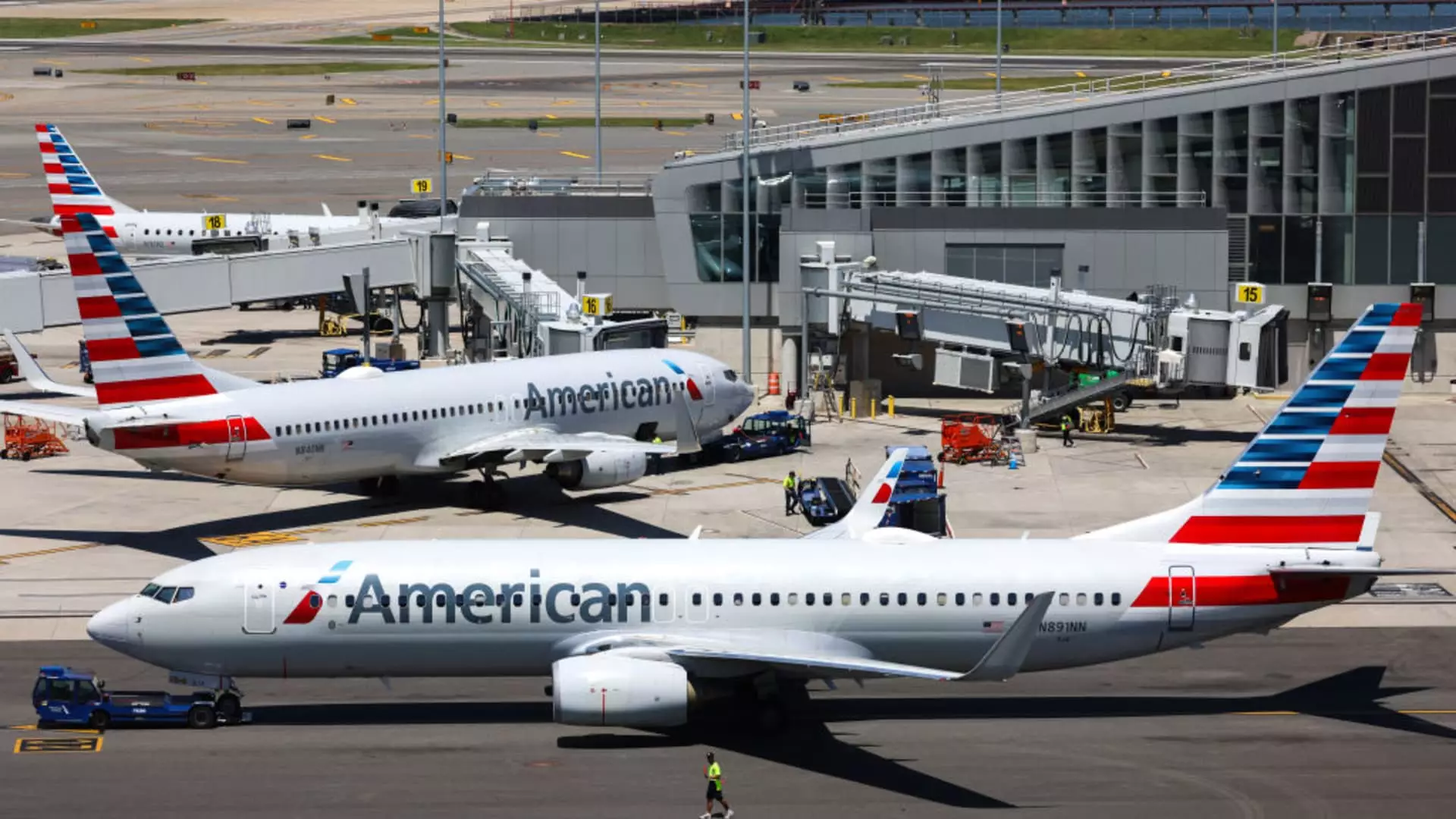American Airlines is reportedly in discussions to form a strategic alliance with Citigroup as its sole credit card issuer, a move that would terminate its long-standing relationship with Barclays. This potential shift, which reflects American’s ambition to streamline and optimize its loyalty program, signals a significant transformation in how the airline engages with its financial partners. The decision comes after months of deliberation with various banking institutions and card networks aimed at enhancing profitability from its rewards offerings.
Leveraging a single card issuer is a strategic maneuver that many businesses have adopted, seeking to consolidate revenue streams and deepen customer loyalty. By engaging Citigroup as its exclusive partner, American Airlines hopes to elevate its AAdvantage loyalty program to new heights—an essential pursuit in a time when consumer loyalty and spending power have dramatically shifted. The finalization of this agreement is contingent on regulatory approval, implying that the deal could face delays or obstacles despite the ongoing negotiations.
The competitive landscape for co-branded credit card partnerships is fiercely contested. Major brands vie for lucrative deals that provide access to a dedicated customer base, allowing banks to capitalize on the consumer spending habits of millions. In this context, the terms of these partnerships can dramatically sway profitability for both the airline and the bank. As brand-centric companies have begun to exert greater pressure for a larger share of the revenue pie—proportionate to interest and fees—banks are reassessing their positions, with some even retreating from co-branding endeavors.
Airlines, reliant on the revenue generated from these partnerships, have increasingly turned to their loyalty programs as a crucial source of income. During the COVID-19 pandemic, while air travel plummeted, spending on credit cards remained robust. This unexpected influx of profitability from card partnerships underscored the importance of maintaining healthy co-branding relationships. As the industry continues to rebound, the growth in credit card spending remains paramount, often outpacing traditional passenger revenue streams.
Despite American Airlines’ assertion of having the largest loyalty program in the industry, the stark reality is that its financial gain from credit partnerships lags behind that of its competitors. For instance, Delta Air Lines reportedly accrued approximately $7 billion in payments from its exclusive partnership with American Express, a figure that dwarfs American’s return of $5.2 billion from Citigroup. Such discrepancies raise questions about the long-term viability of American’s strategy and whether its proposed exclusivity with Citigroup will genuinely bolster its standings.
American Airlines has openly acknowledged that it is in constant pursuit of avenues to enhance its mutual offerings alongside its partners. This ongoing commitment to improving customer experience is critical as airlines navigate the complexities of a post-pandemic environment where customer expectations and spending behavior have evolved.
While the potential deal between American Airlines and Citigroup appears promising, there are numerous hurdles that could complicate matters, particularly from a regulatory standpoint. Entities like the Department of Transportation may scrutinize the agreement, potentially causing delays or even forcing American to reassess its course of action regarding Barclays. Such challenges highlight the overarching vulnerability that extensive corporate partnerships can pose in the face of regulatory landscapes.
Historically, American Airlines maintained two credit card partnerships following its merger with US Airways, allowing it to diversify its approach. However, the choice to concentrate its loyalty incentives into Citigroup’s hands parallels a broader trend among businesses to streamline operations and focus their efforts on fewer partnerships. Citigroup, under the leadership of CEO Jane Fraser, appears well-positioned to capitalize on this opportunity, possessing a more favorable customer base in terms of spending behavior and risk.
The potential shift to an exclusive partnership with Citigroup suggests a broader strategy to enhance not only customer experiences but also the profitability of the airline’s credit card offerings. With preliminary negotiations indicating a desire for a long-term commitment of seven to ten years, both parties have substantial stakes in realizing mutually beneficial outcomes—a scenario where Citigroup can amortize its investments while American Airlines seeks to capitalize on increased customer engagement.
As this unfolding saga progresses, it will be intriguing to evaluate how American Airlines and Citigroup maneuver within an evolving marketplace, while competitors like Barclays pivot to diverse partnerships that stray from traditional airline collaborations. The dynamics of loyalty programs are becoming increasingly central to how brands engage with consumers, posing both challenges and opportunities as they adapt to shifting expectations and conditions in the financial landscape.
The potential alliance between American Airlines and Citigroup serves as a compelling case study in the evolving realm of co-branded credit card partnerships. As they navigate this transitional phase, one thing seems clear: the future of loyalty programs hinges on adaptability, mutual value creation, and an unwavering focus on enhancing the customer experience.

